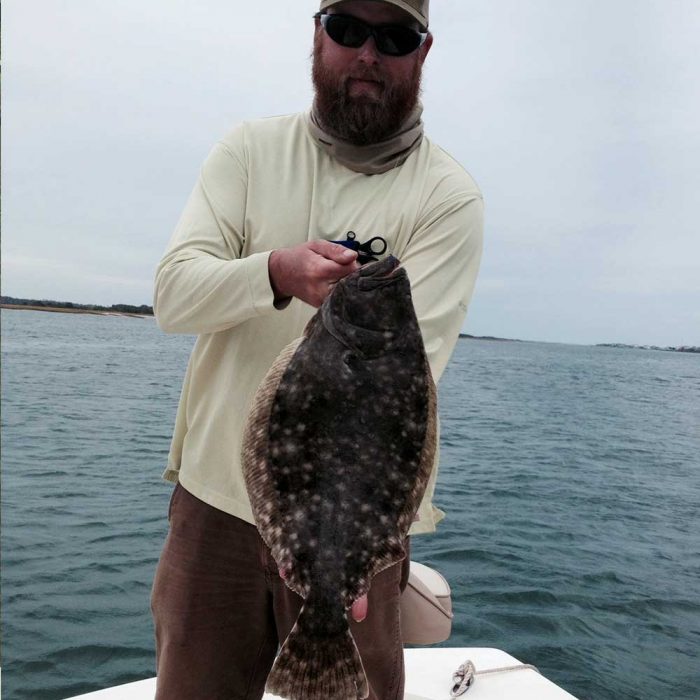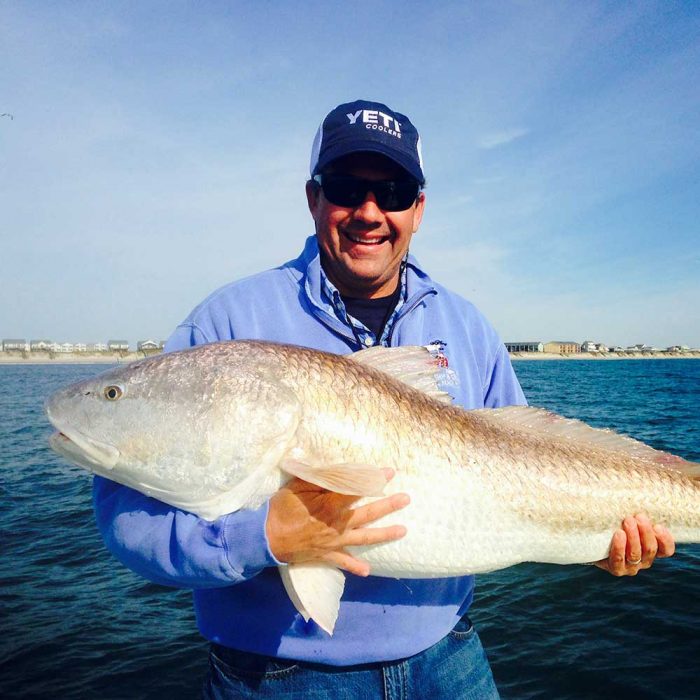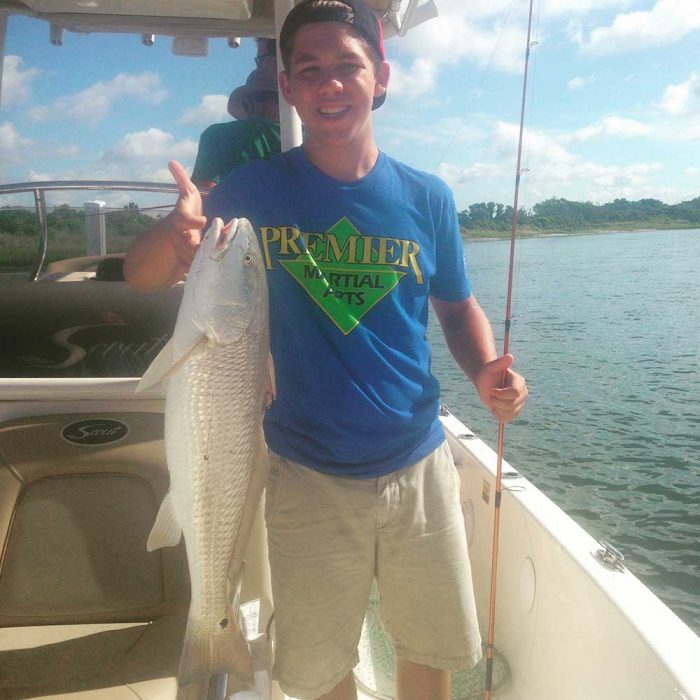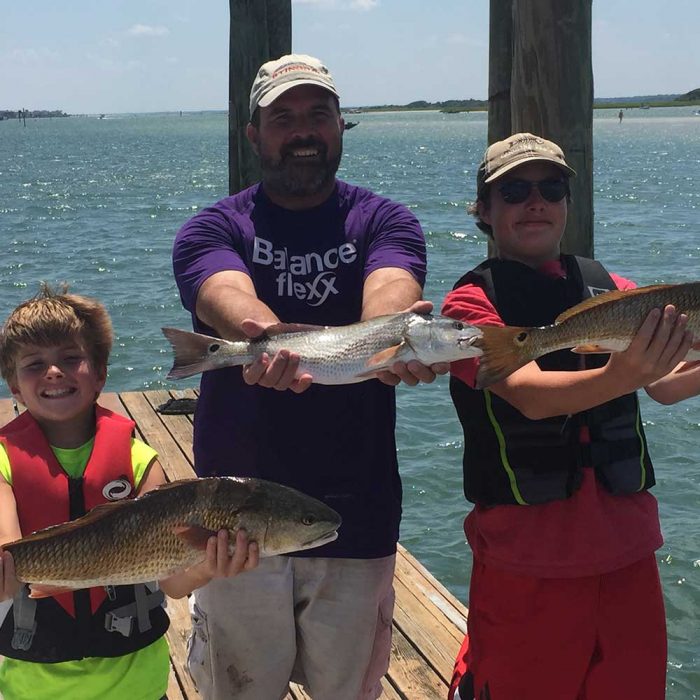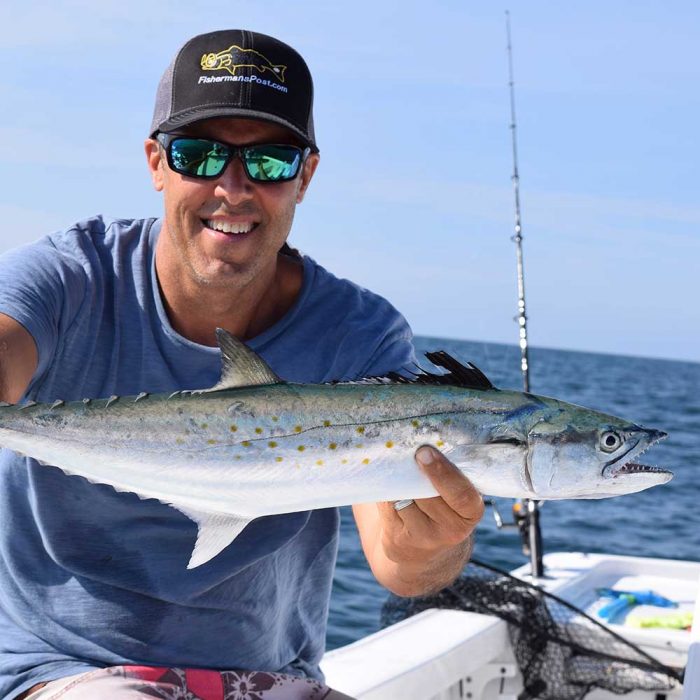South End Anglers offers anglers of all ages and experience levels the opportunity to enjoy the waters surrounding Topsail Island, Lea Island, Figure 8 Island and Wrightsville Beach. Each area provides its own unique experiences.
South End Angler’s ability to access so much of the areas fishing grounds is possible because of our 2016 Sea Hunt BR22BX, powered by Yamaha. She safely and comfortably hauls 4 anglers and our skipper. The boat is at home in the backwaters, drawing only 14” of water, she can get to you to where they are hiding. The redesigned hull has an exaggerated bow flair and enough freeboard to safely transport a crew out into the ocean for a day of fishing.
We can’t control the weather, but we have the ability to catch fish on those days when the weather is less than perfect. Safety is the captains number one priority and if conditions are too rough your trip will either be rescheduled or your deposit will be refunded. It is strongly advised to book your South End Anglers fishing charter early during your stay to allow for a makeup day in the event of inclement weather.
Our home water is strategically located in Hampstead, NC. It places us within easy striking distance of some of the best fishing the area has to offer. Within minutes we can be outside the inlet pursuing nearshore pelagic species or casting to shallow water fish in the backwaters.
Topsail Island’s marsh provides ideal habitat for red and black drum, speckled trout, flounder, croaker, spot, grey trout, sheepshead and bluefish. The area marshes offer miles of grassy shorelines, oyster beds, shallow flats and creeks. The local waterways provide ample man made structure and depth contours that predator fish take advantage of as well. Mullet, crab, shrimp, menhaden and many other species of bait fish are present in the backwaters year round, providing plenty of forage for the fish.
The offshore fishing found near Topsail Island is a true hidden gem along the south eastern coast of North Carolina. From New River Inlet to New Topsail Inlet there are abundant artificial reels, live bottom, ledges, rock piles and depth contours.
At South End Anglers we focus our attention on the areas just off the beach out to the “middle grounds”, in the 18-20 mile range. King mackerel, Spanish mackerel, cobia, tarpon, Atlantic bonito, false albacore, greater amberjack, barracuda, mahi mahi, sharks, and jack crevalle are some the species we target from March through October.
In the same range, the bottom fishery is outstanding and provides a great option all year long. Grouper, triggerfish, grunts, snapper, porgies, black sea bass, and flounder provide our guests with steady action and excellent table fare. We promote catch and release fishing, but are happy to clean some of your catch to enjoy for that nights supper.
To the south, sandwiched between Topsail Island and Figure Eight Island is Lea-Hutaff Island. This 5,641-acre undeveloped barrier island and marsh system has remained undisturbed by development, dredged sand, and off-road vehicles.
Lea Island is characterized by large, open expanses of bare sand caused by over-wash during hurricanes in 1996, 1998 and 1999. One of North Carolina’s few pristine barrier islands, Lea-Hutaff, is an important sanctuary for wildlife and a peaceful recreation area for people.
Figure Eight Island is located just to the south of us and considered to be a part of the Wilmington metropolitan area. The barrier island is known for being an affluent summer colony for North Carolinians, actors and diplomats. Aside from the island being star studded, the marsh behind Figure Eight offers great fishing.
We focus our attention on Figure Eight quite often throughout the season. The backwater creeks and areas near Rich’s Inlet provide excellent shots at catching red drum, flounder and speckled trout. Figure Eight’s marsh ecosystem has abundant oyster beds, creeks, flats and grassy shorelines.
South End Anglers sets its sights on Wrightsville Beach throughout the year for one reason, the jetties. Masonboro Inlet is a jettied pass that provides a deep water entrance to the Atlantic Ocean. Subsequently on both sides of the inlet are large rocks that create perfect habitat for resident and migratory fish.
Red drum, flounder and speckled trout call Masonboro jetty home throughout the year. We primarily target these fish on the “shoulders” of the season here. The jetties provide a great staging area for fish migrating to and from the ocean. The jetty also holds large numbers of baitfish during the summer and migrating fish like cobia, tarpon, king mackerel, Spanish mackerel and bluefish will congregate around the rocks to take advantage.


